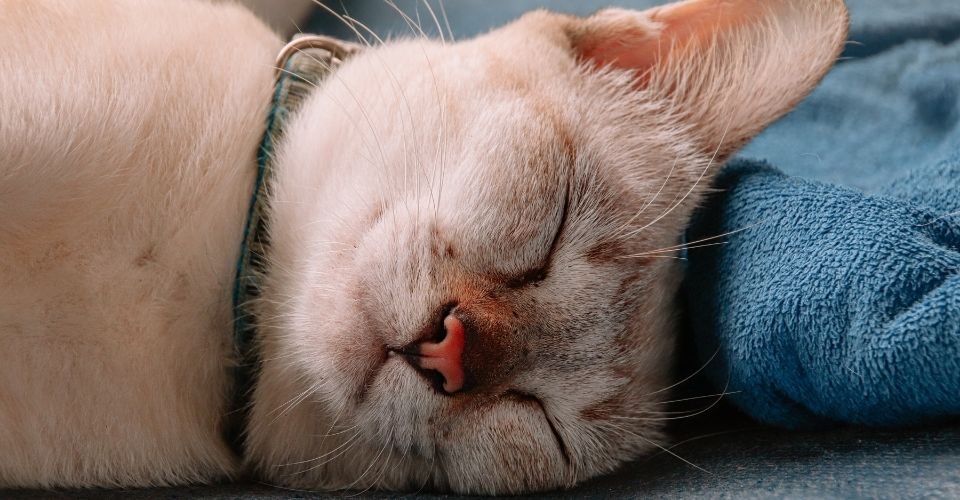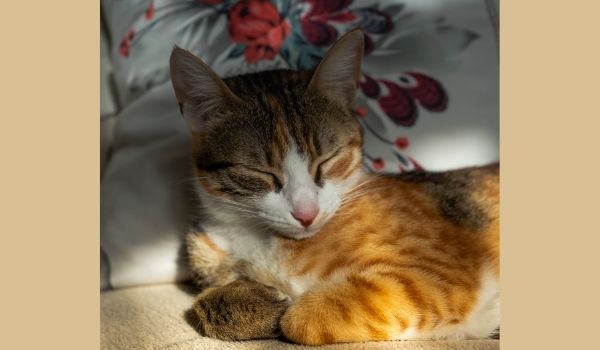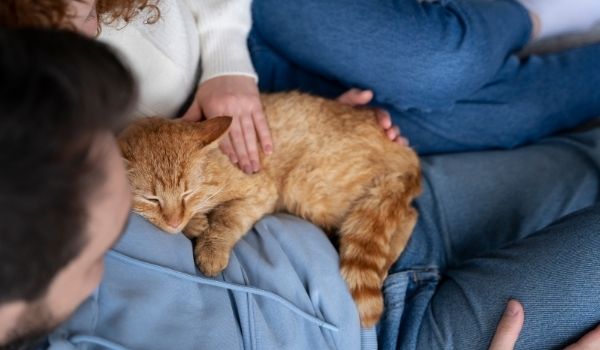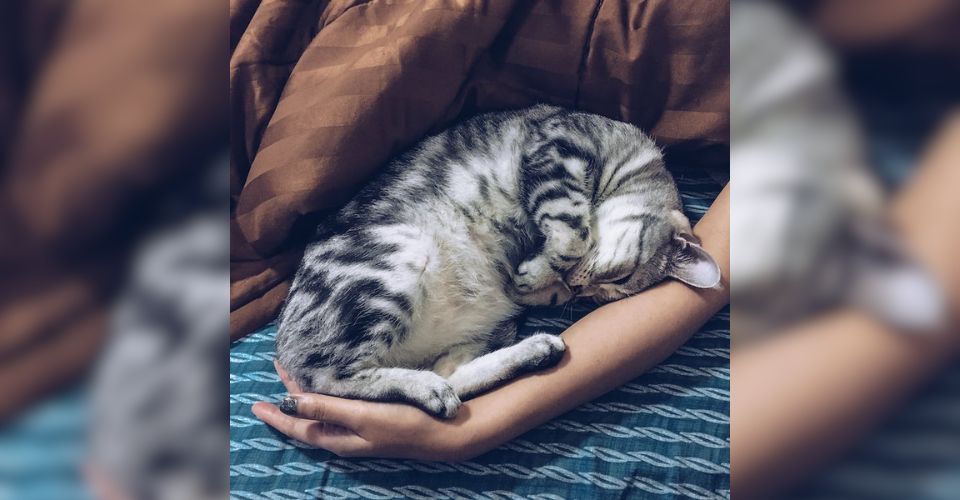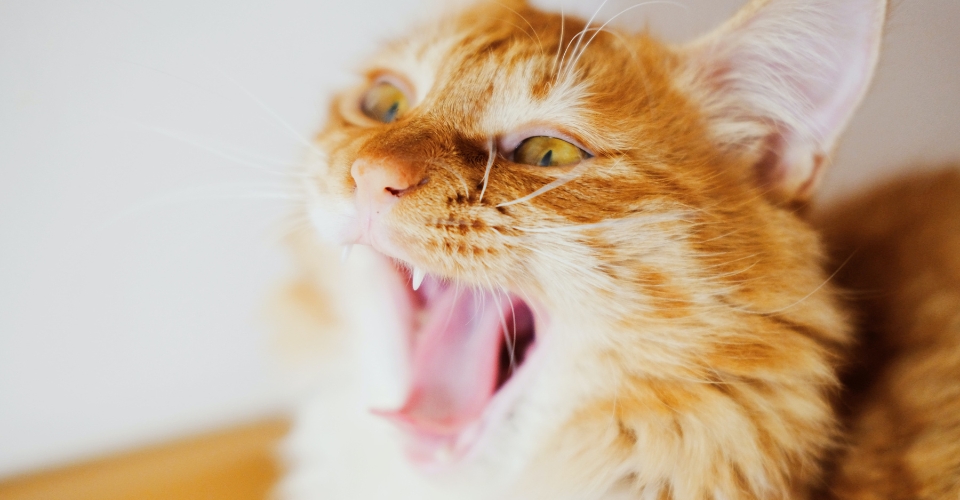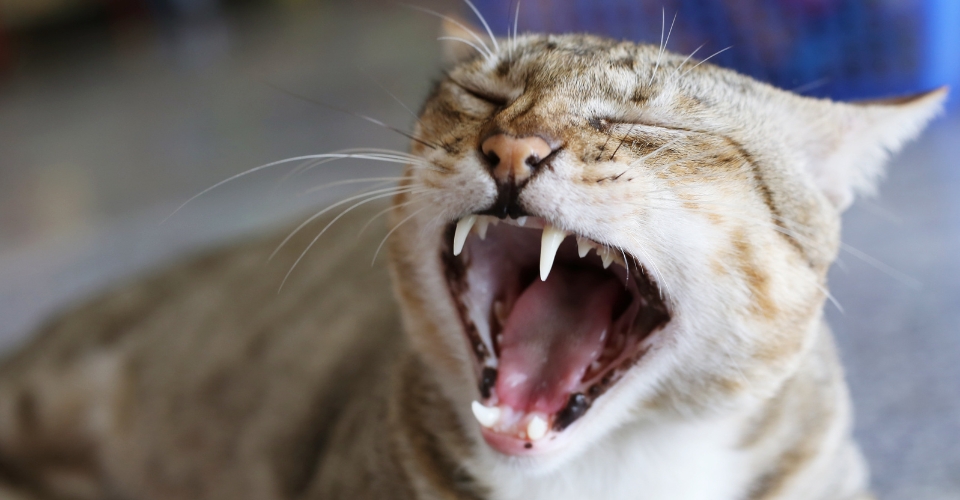Many new cat parents find it hard to understand their new family member’s moods and behavioral patterns. Kitties bid their sweet time getting familiar with their new home. So, it is very special when they come up to curl beside you. Soon enough, they send unsuspecting owners on a searching spree, looking up ‘why does my cat sleep between my legs?’ Because what started as a sweet gesture of acceptance in the beginning can be worrisome as time goes by. You might wonder if everything is fine with the little guy.
Why Does My Cat Sleep Between My Legs?
First of all, congratulations, your cat feels safe with you; therefore, it comes to you for comfort. Cats do not seem to sleep in one specific spot but several comfortable spaces of preference. So, why between your legs? There can be many possible explanations for that.
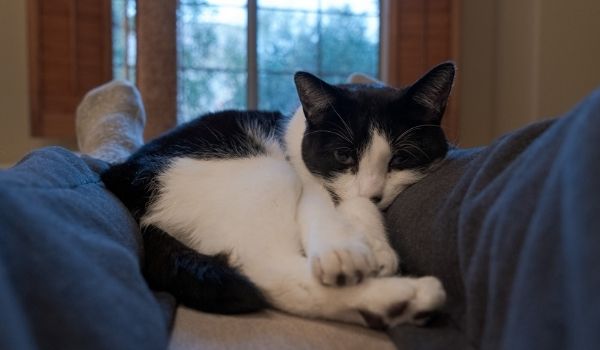
Once cats have chosen you as their favorite human, they will come to you for a one-to-one bonding time. The space between your legs can be a cozy little place where they can peacefully perch themselves for a comfortable little catnap. Also, it is a great way to have, shall we say, a cat’s eye view around the house.
Let us also consider that cats are both predators and preyed upon by larger species in the wild. Therefore, they need a secure place to nap where they can let their guard down, knowing someone (you) is watching over them. There could be other possible explanations underlining this behavior. For instance, sleeping between your legs is your cat’s coping mechanism against a possibly stressful situation, the need for a deep sleep in a comfy space to heal, or just an act of marking their territory (yeah, your lap is THEIR territory).
Let’s get to the details!
Security & Protection
Cats are natural predators. Even though domesticated for quite some time, they haven’t abandoned their instincts. And those instincts are not only of a cunning predator but also of a prey, actively protecting itself from getting pounced on by predators. It does not help much that they have to deal with aggressive dogs chasing them or, worse, attempting to pin them down.
As their human, you are someone they trust for their safety and wellbeing. Isn’t it natural then to come to you for a nice, comfortable sleep? You might be thinking, okay, I understand the security part, but why exactly, between my legs? Because they feel secure there or may even have a sense of being gently watched over.
Warmth
Cats need somewhere warm and cozy to fall asleep. They evaluate all the possible options, be it a patch of grass receiving direct sunlight, on top of a sofa, over a radiator, and so on. Usually, you will find them napping around a few of their favorite spots, depending on how warm and comfortable it is in a particular part of the day. If the spot isn’t cozy enough, they compensate by wrapping their tails around their body and using their forelimbs as a cushion.
People have a body temperature regulated by an intricate thermoregulation system. To the tiny kitties living in your house, you are another source of warmth and comfort. It makes all the sense for them to snuggle up between your legs for added comfort.

|
|
Marking Her Territory
Cats are territorial species, which means they identify space as theirs and then use various means to declare their authority over it. Communicating to the other members of the species to not dare set their paws inside. One of the ways to do so is to spread their scent all over the place. By climbing into your lap and sitting between your legs, they mark you as theirs. If your cat does sit between your legs, you will notice that no other cat would try to occupy that space even if your pet is not around. The reason is they recognize that your lap is marked.
Stress
Cats can also choose to sleep between your legs because they are stressed for some reason and need to draw comfort from you. Felines display their anxiety in several ways, such as showing aggressive behavior, excessive grooming, not using the litter box, and defecating in random places.
Territorial behavior becomes more pronounced as the cat feels increasingly stressed. Hence the stubborn attitude, refusing to let go of your lap. If you notice your cat spending more time sleeping between your legs to cope with stress, try to be more sensitive. In such a situation, if you have to remove the cat, slowly lift one leg to give enough time to get off.
Staying On Top of Things
Cats are predators. Naturally, they want to stay at a higher elevation from the ground, keeping an eye on their surroundings. That is why cats like to climb over shelves and observe everything. Now, your legs are definitely not as high as the bookshelf but higher enough to give them a viewpoint around the room while feeling all warm and cozy, possibly getting a back rub as they enjoy themselves.
Bonding Time
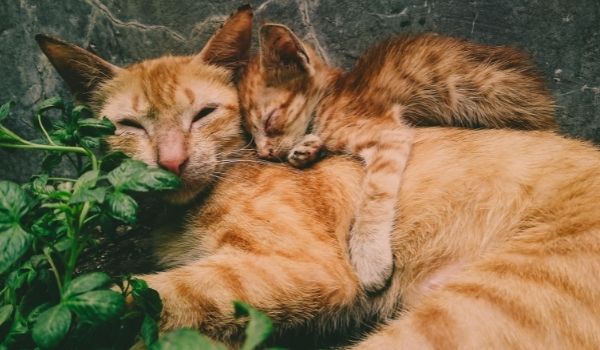
Cats engage in pillowing, essentially piling themselves next to other cats for warmth and support. The behavior is not limited to felines but extends to big cats like lions. It is their way of bonding with each other. If you ever notice a litter of kittens sleeping with their mother, you would also observe a synchronized purr as they sleep, besides the pillowing. It is an exercise in developing a closer familial bond.
In the absence of any other kitties or rather friendly ones, they might choose you for pillowing. So, if your cat finds her way to your lap for sleeping, it could be a sign that she trusts you and wants to bond with you on a deeper level.
Deep Sleep
Cats have a sleeping pattern opposite to humans. They do not get down for a good 6 – 8 hours of sleep. Instead, they break it up into several short naps throughout the day, staying more active around twilight. It is another behavior stemming from their evolution as predators, as cats had to remain somewhat aware of their surroundings even in their sleep.
However, they may need deep sleep sometimes to heal themselves. And to fall in a deep sleep for a predator is become vulnerable. They would only allow themselves to be so around their owners, so they can take good care of themselves as they enjoy a session of deep sleep.
Tips to Change the Habit
Now that we have discussed the possible explanations, you might be interested to learn if there is a way out for you. Many pet owners actually like it when their cats fall asleep on top of them. But it is not always feasible and may even be uncomfortable for many. It would be worth the effort to try and make her sleep in her own bed.
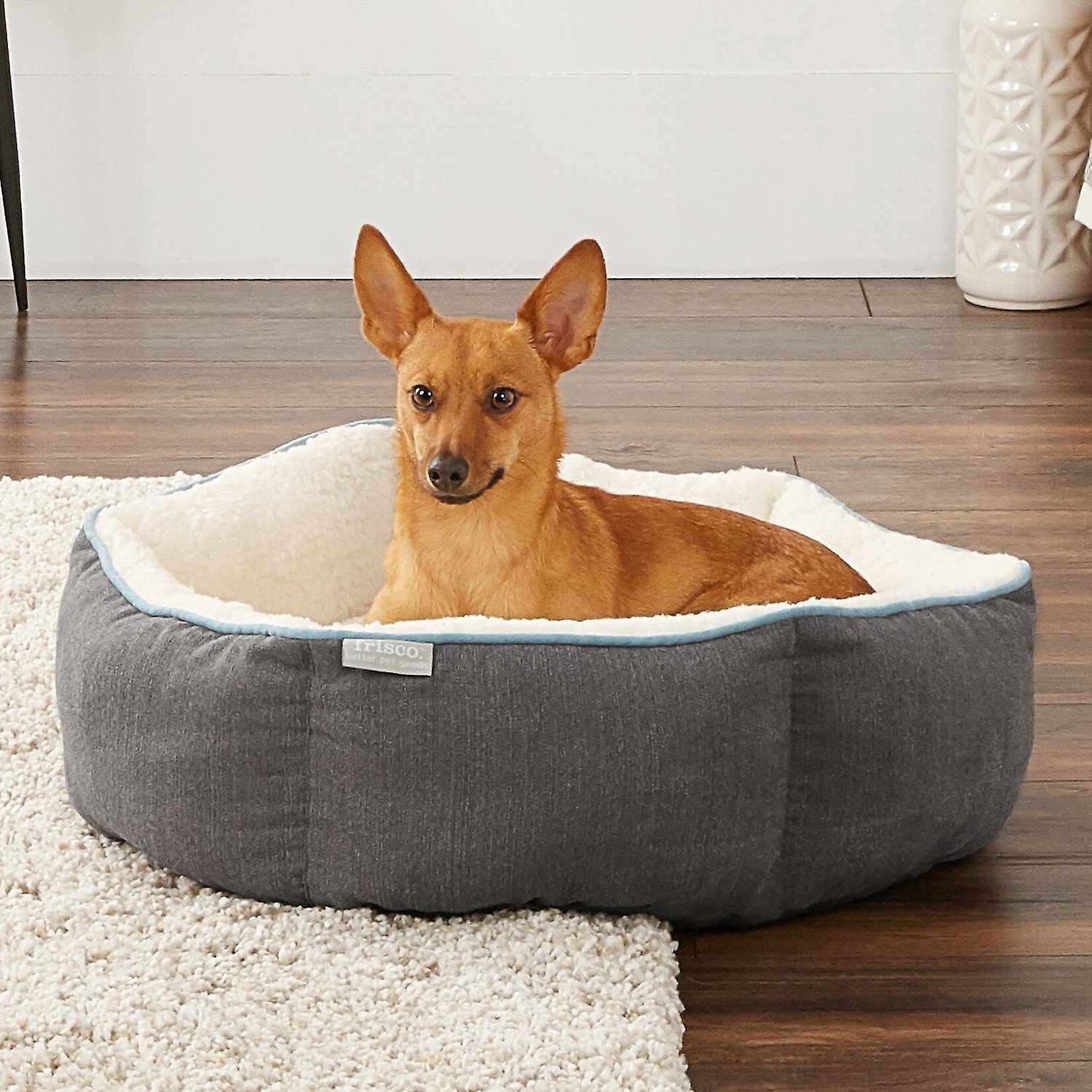
|
|
You can start off by getting your cat a bed with raised sides to give her a sense of protection. Place the bed at a higher place, from where she can see you can be comforting for her. To provide her with extra warmth, try getting her heating pads, microwave them, and put them on their bed before putting her to sleep. Let her smell your scent by lining her bed with one of your shirts. If you have tried clicker training for your cat, use a clicker to let her know that you appreciate her sleeping in her own place. Despite the tips, it may still take some time for your cat to learn that her bed is the best place to sleep. Persevere, and try to offer her intermittent cuddle time to make her feel loved.

|
|
Final Words
Cats may want to sleep between your legs for several reasons, ranging from bonding attempts to feelings of security, warmth, and even sickness. If there are no health issues and they are just making themselves comfortable, you can make some adjustments to bring it under control. Keeping an eye on your cat’s wellbeing is of prime importance. If you feel that she is showing abnormal behavior, shows an anomaly in her feeding and drinking, is being too vocal, contact your vet for an examination. Better safe than sorry.

